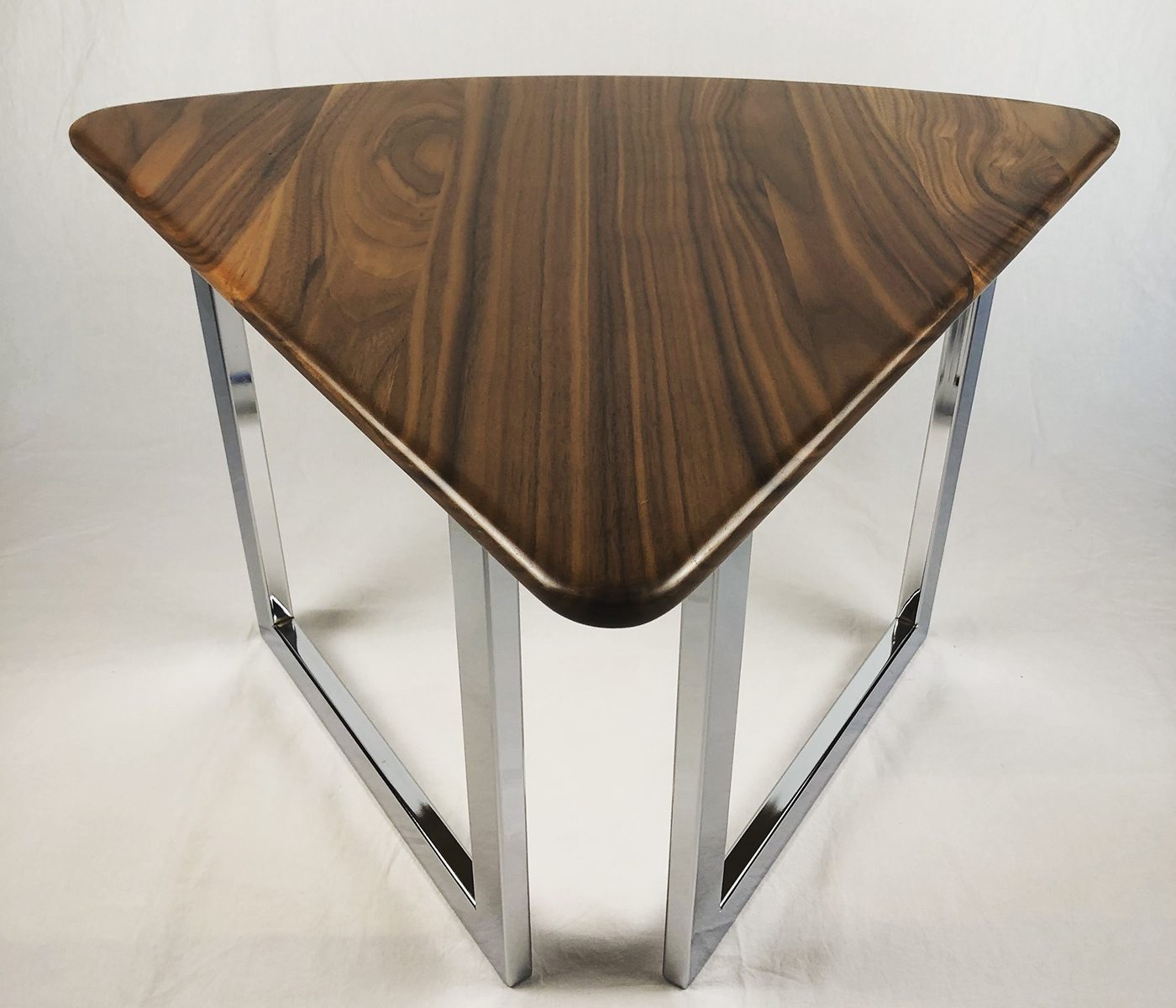Chrome is highly durable, extremely hard and has a unique shine that can be a challenge to reproduce. Unfortunately, there are some significant hazards to both the environment and human health where the use of chrome is concerned.
In the context of furniture, the term “chrome” usually refers to a thin layer of electroplated chromium applied to a surface. It is highly resistant to rust – in fact, chromium is what keeps stainless steel (a combination of chromium and steel) from corroding.
Elemental chromium can exist in several different “states” which have different properties in terms of how they react with other substances, or how they affect living things. It occurs most commonly as either trivalent chromium (Cr III) or hexavalent chromium (Cr VI). While Chromium (III) is not considered harmful, Chromium (VI) is highly toxic and is classified as an established human carcinogen by the US Environmental Protection Agency.
Perhaps surprisingly, it’s Chromium (VI) which is most commonly used in the process of applying chrome to a surface. Those who work regularly with chrome plating are particularly at risk of inhaling the toxic compound, and it is essential that they take every precaution to minimise their exposure.
Chromium (VI) also has the potential to contaminate supplies of groundwater and drinking water, posing a direct threat to human health and surrounding plant and animal life. It not only impacts the aquatic environment but can also form chromium-contaminated soils in residential and industrial areas. Other substances such as cadmium and cyanide also used in the chrome-plating process, can cause organ damage, for example, kidney and lung failure, brain and liver damage.
These risks make chrome a far less appealing choice of material for furniture. Thankfully, there are plenty of alternatives emerging that are quickly gaining popularity in the interior design industry. Polished aluminium is a popular alternative to replicate chrome’s metallic shine with a much lower environmental or health impact. There also appears to be a growing trend for more natural materials, such as timber, in furniture products, meaning a shift away from cold metal surfaces.
When a piece of furniture has been GECA certified, you can be sure that it has been assessed to meet environmental, human health and ethical impact criteria. Products certified under our furniture standards can also contribute toward achieving credit points for projects being certified under the Green Building Council of Australia’s Green Star – Performance tool.
With a range of attractive and durable substitutes for chrome available on the market, the increasing prevalence of Green Star projects and the trend towards a more natural look, perhaps we can expect to see less of that strong metallic shine in our furniture. In terms of health and environmental risks, surely that’s a step in the right direction.




























